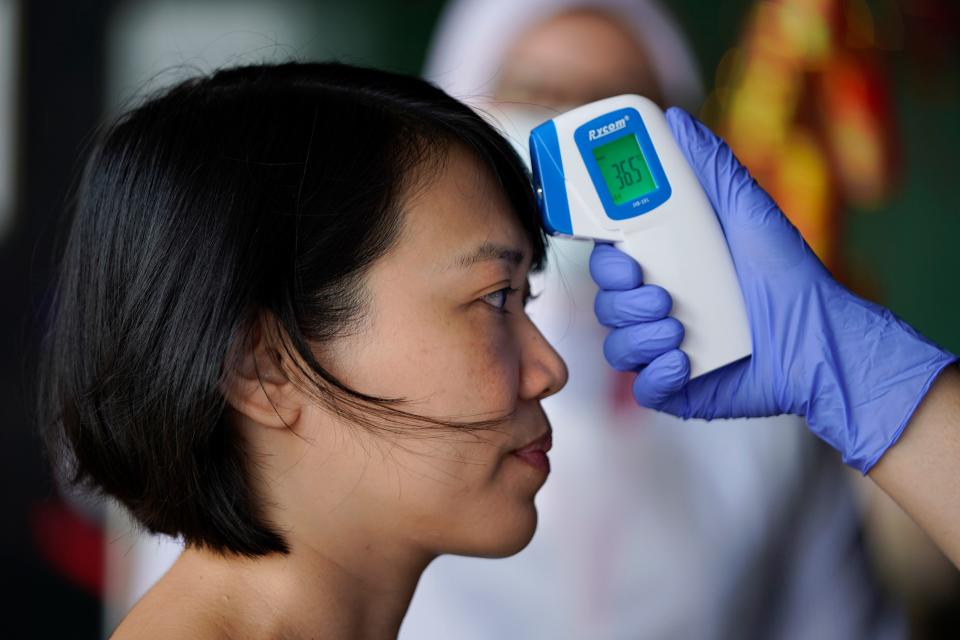A day-by-day breakdown of coronavirus symptoms shows how the disease, COVID-19, goes from bad to worse
Most cases of the new coronavirus are mild, but about 20% of patients either have severe cases of disease or become critically ill.
A fever is the most common symptom.
Here's how the symptoms progress day by day among typical patients.
For the latest case total and death toll, see Business Insider's live updates here.
It starts with a fever. That's the most common symptom among patients infected by the coronavirus that originated in Wuhan, China.

AP Photo/Vincent Thian
The virus has now reached at least 75 countries, including the US, which has reported more than 120 cases and nine deaths. It causes a disease known as COVID-19.
A study of nearly 140 patients at the Zhongnan Hospital of Wuhan University identified a typical pattern of symptoms associated with COVID-19. About 99% of the patients developed a high temperature, while more than half experienced fatigue and a dry cough. About a third also experienced muscle pain and difficulty breathing.
Research from the Chinese Center for Disease Control suggests that about 80% of coronavirus cases are mild. About 15% of patients have gotten severe cases, and 5% have become critically ill.
Here's how symptoms progress among typical patients:
Day 1: Patients run a fever. They may also experience fatigue, muscle pain, and a dry cough. A small minority may have had diarrhea or nausea one to two days before.
Day 5: Patients may have difficulty breathing — especially if they are older or have a preexisting health condition.
Day 7: This is how long it takes, on average, before patients are admitted to a hospital, according to the Wuhan University study.
Day 8: At this point, patients with severe cases (15%, according to the Chinese CDC) develop acute respiratory distress syndrome, an illness that occurs when fluid builds up the lungs. ARDS is often fatal.
Day 10: If patients have worsening symptoms, this is the time in the disease's progression when they're most likely to be admitted to the ICU. These patients probably have more abdominal pain and appetite loss than patients with milder cases. Only a small fraction die: The current fatality rate hovers at about 2%.
Day 17: On average, people who recover from the virus are discharged from the hospital after 2 1/2 weeks.
The first symptoms, however, may not come right after a person has been infected. Lauren Ancel Meyers, an epidemiologist at the University of Texas at Austin, told Business Insider that a typical patient might be infected without showing symptoms for five or more days.
Once symptoms do appear, they can be similar to those of pneumonia. But Paras Lakhani, a radiologist at Thomas Jefferson University, told Business Insider that COVID-19 could be distinguished from pneumonia because of the way it worsened over time.
"Pneumonia usually doesn't rapidly progress," Lakhani said. "Typically, most hospitals will treat with antibiotics and patients will stabilize and then start to get better."
Coronavirus patients, however, can get worse even after they receive treatment such as fluids or steroids. One case study found that three days after a 33-year-old woman started receiving treatment at a hospital in Lanzhou, her case was more pronounced than when she arrived.
In total, the new coronavirus has killed more than 3,100 people and infected more than 92,000. Around 87% of cases are located on the Chinese mainland.
Read more:
Read the original article on Business Insider

